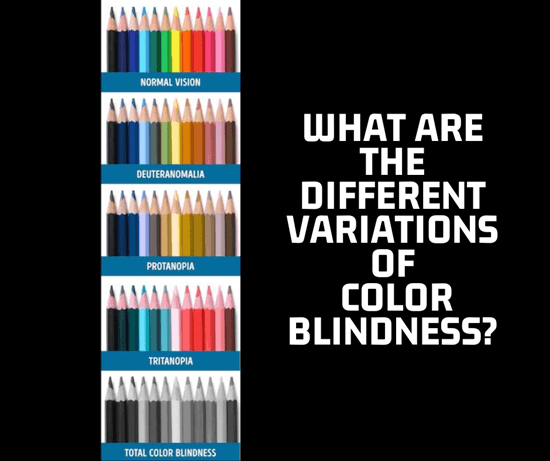Posted by: Central Florida Eye Specialists in Eye Health

What Is Color Blindness?
According to the National Eye Institute, color blindness, also known as color vision deficiency (CVD), is a condition that affects 300 million people who do not see color the way they should. Color blindness affects approximately 1 in 12 men and 1 in 200 women with the condition where their eyes see differences in how the light comes in. Look at everything around you; the colors you see are not inherent to the objects you see. Instead, the objects absorb light and reflect specific colors we see. That red fire extinguisher is only red because it is reflected when the light hits it. Turn off the lights, and the red fire extinguisher becomes a dark gray color.
How Do We See Color?
We see color as it strikes the back of the retina. The retina is lined with millions of cells known as rods and cones that take the colors reflected off objects as light-sensitive signals and relay those signals to our brains via the optic nerve and pathway. Our brain does the work in recognizing that specific signals from specific reflections are a particular type of color. Rod cells are sensitive to different light levels, while cone cells are more sensitive to differing colors. People generally have three types of cone cells that can discern different colors and shades.
Defining Color
Different types of color blindness are separated into three categories.
Red-Green Color Blindness
There are four types of red-green color blindness :
- Deuteranomaly is the most common type of red-green color blindness. It makes the green look redder. This type is mild and doesn’t usually get in the way of everyday activities.
- Protanomaly makes red look more green and less bright.
- Protanopia and Deuteranopia both make you unable to differentiate between red and green altogether.
Blue-Yellow Color Blindness
This less-common color blindness makes it hard to distinguish between blue and green and yellow and red.
There are two types of blue-yellow color blindness:
- Tritanomaly makes it hard to distinguish between blue and green and yellow and red.
- Tritanopia makes you unable to tell the difference between blue and green, purple and red, and yellow and pink. It also makes colors look less bright.
Full-Color Blindness
If there is complete color blindness, you can’t see colors at all, which is also called monochromacy, which is pretty uncommon. Depending on the type, there may be trouble seeing clearly, and more sensitivity to light.
Color Blindness Is Something We Check For
Color blindness might seem like a secondary issue, but it can make some everyday tasks more difficult. There are resources to help those with different vision impairments. Technology has made it accessible to adjust the screen’s contrast, create bolder or more prominent text, and filter specific colors. If you want to ensure you have been living life in full color, we can test for that in an eye exam. Call TODAY to schedule your appointment!
Your Lifelong Eye Health Is Our Highest Priority!
References: American Academy of Ophthalmology, American Optometric Association, and the National Eye Institute. This blog provides information and discussion about eye health and related subjects. The content provided within this blog and any linked materials are not intended and should not be considered medical advice. If the reader or any person has a medical concern, they should consult with an appropriately licensed physician.
